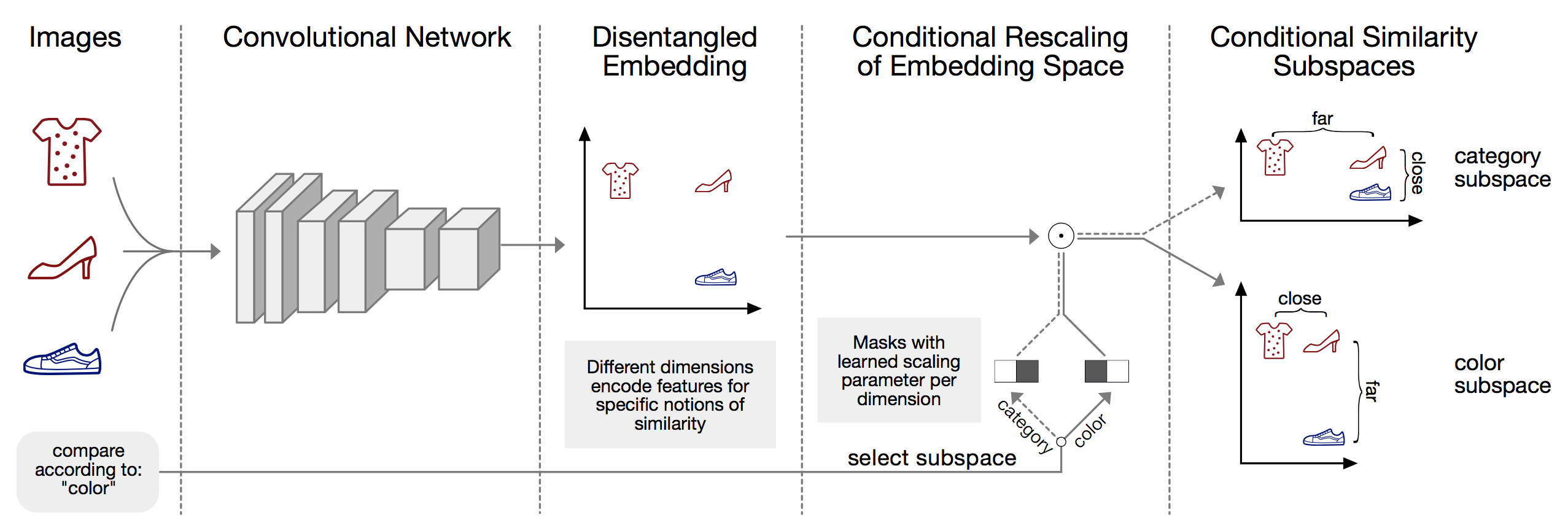Conditional Similarity Networks
What makes images similar? To measure the similarity between images, they are typically embedded in a feature-vector space, in which their distance preserve the relative dissimilarity. However, when learning such similarity embeddings the simplifying assumption is commonly made that images are only compared to one unique measure of similarity. A main reason for this is that contradicting notions of similarities cannot be captured in a single space. To address this shortcoming, we propose Conditional Similarity Networks (CSNs) that learn embeddings differentiated into semantically distinct subspaces that capture the different notions of similarities. CSNs jointly learn a disentangled embedding where features for different similarities are encoded in separate dimensions as well as masks that select and reweight relevant dimensions to induce a subspace that encodes a specific similarity notion. We show that our approach learns interpretable image representations with visually relevant semantic subspaces. Further, when evaluating on triplet questions from multiple similarity notions our model even outperforms the accuracy obtained by training individual specialized networks for each notion separately.
PDF Abstract CVPR 2017 PDF CVPR 2017 Abstract

 ImageNet
ImageNet